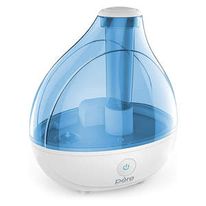The first few weeks of breastfeeding can be a trying time for new moms. While it may seem like almost everything you do as a parent is difficult, the rewards that come from feeding your child are well worth it. In most cases, problems with lactation are temporary and will resolve themselves in time. However, some women experience more difficulty than others in establishing their supply and these tips and tricks will help you manage common breastfeeding problems.
Which Position is Best for Breastaging?
Breastfeeding in a side-lying position will help you avoid nipple pain. Although it may seem like a relaxing position, breastfeeding in a reclined position can compress the blood flow and lead to nipple problems. The best position for breastfeeding is on your side with the baby positioned at an angle that is neither above nor below your breast.
The American Academy of Pediatrics recommends that women avoid using a breastfeeding pillow. If you have a medical condition that requires you to be more upright, you can still breastfeed. Speak to your doctor about ways that you can be comfortable while breastfeeding.
Engorgement and Supply Issues
Not all women experience engorgement, but if you do, there are ways to manage it. Engorgement can occur when your milk comes in a few days after birth and is most commonly felt in the breasts and nipples. It can be a side effect of hormonal changes that are happening in your body as your milk comes in. It can happen suddenly and last for about 24 hours, but make sure you watch for signs of infection as that can be a sign that you are getting an infection in the breast from an open wound. You can help to avoid the pain and discomfort of engorgement by feeding your baby often.
While you can use a breast pump to relieve the pressure, you don’t want to overuse it as this can cause your supply to go down. If your baby is unable to breastfeed, use warm compresses to help with the pain and discomfort. Frequent breastfeeding can help get things back on track once the engorgement passes.
Baby Has Trouble Latching
If your baby has trouble latching, there are a few things you can do to help. First, make sure that your breasts are clean and free of any soap or lotion that could prevent your baby from getting a good latch. Try different positions until you find what works for you and your little one. If you have tried several positions and your baby still isn’t getting a good latch, you may need to pump your breast milk into a bottle, so that your baby can feed from a bottle. This can be done for a short period of time and should be done with the help of a lactation consultant so that you can get help with figuring out why your baby is having trouble latching in the first place.
Baby Is Constantly Hungry and Craves Breasts
If your baby seems constantly hungry and can’t get enough of your breasts, you may be dealing with a low milk supply. Low supply is a common problem, particularly in first-time mothers. Fortunately, there are a few things you can do to help boost your supply. Try breastfeeding more often and for longer periods of time.
Frequent feedings will stimulate your body to produce more milk, and feeding for longer periods of time will help to prevent your baby from becoming too hungry and over-sucking their little fingers. If you are breastfeeding, you can use breast pumps to increase your supply. While you should not overuse breast pumps as this can cause a reduction in your supply, doing so once or twice a day for 10 minutes can help to stimulate your body to make more milk.
Nipple Pain or Irritation
Sometimes, you may experience pain or irritation when breastfeeding. This can happen for a variety of reasons, including incorrect positioning, an infection, or even a reaction to your baby’s saliva. If you are experiencing nipple pain, there are a few things you can do to help ease the discomfort. First, make sure that your breasts are clean to avoid any infections. You can also use nipple shields to protect your nipples from your baby’s tongue and saliva. If you are experiencing pain while your baby is latched on, try repositioning.
Conclusion
Breastfeeding has a lot of benefits for both you and your baby. While it might be a bit challenging at first, with a little practice, you’ll get the hang of it in no time. Remember to stay calm, and don’t worry if it’s taking longer than you expected. Your baby will let you know when they’re ready to eat. In the meantime, try to relax and enjoy this special bonding time.
These tips and tricks will help you manage common breastfeeding problems so that you can focus on the rewards of breastfeeding. Remember that breastfeeding can take time to get the hang of, and not every woman experiences problems. With a bit of patience and perseverance, you’ll be breastfeeding like a pro in no time.



